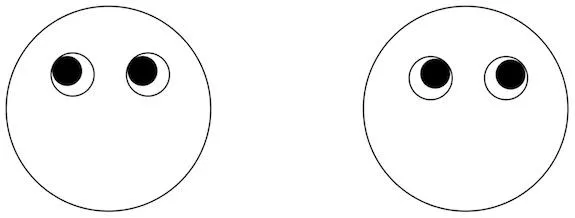Myth Busted: Looking Left or Right Doesn’t Indicate If You’re Lying
A psychological study has debunked the idea that the direction of a speaker’s eyes indicate lying or telling the truth
/https://tf-cmsv2-smithsonianmag-media.s3.amazonaws.com/filer/20120712113036eye-small.png)
We’ve all heard the claim: Watching a person’s eyes as they speak can help us figure out if they’re lying or telling the truth. Supposedly, if a right-handed person looks to the right, they are unwittingly revealing activity in the right hemisphere—the creative half of their brain—indicating they’re manufacturing a lie. On the other hand, eyes pointed to the left suggest activity in the rational, left hemisphere, showing that the speaker is telling the truth.
This idea has become so entrenched in conventional wisdom that it’s reportedly been used to train police conducting interrogations and can be found all over the web. But a new study by researchers in the United Kingdom and Canada, published yesterday in the journal PLoS ONE, indicates that there’s absolutely no evidence for it at all. ”It’s madness,” says Richard Wiseman, the lead author of the study. “You might as well just toss a coin, and if it comes up heads, you’re going up against a liar.”
Wiseman, who holds a Professorship in the Public Understanding of Psychology at the University of Hertfordshire, frequently speaks on the psychology of lying and illusion, and says that running into this myth over and over again finally convinced him to test it scientifically. “Whenever I talk about lying publicly, this thing about eye movements always comes up,” he says. “It doesn’t at all match with the psychological literature, so I thought it’d be good to put it to the test.”

The first-ever study looking specifically into the myth yielded clear-cut results. In the first phase of the experiment, half of the participants were instructed to lie, saying that they had put a cell phone into a desk drawer when they had actually pocketed it in their bag. The other half were asked to put the phone in the drawer and then tell the truth. The interview was videotaped and the participants’ eye directions analyzed—and both groups showed virtually the exact same amount of looking left and right.
The second half of the experiment examined real-life lying. “We looked at tapes of high-level non-sanctioned lies—people at press conferences who were appealing for a missing relative,” says Wiseman. For half of the press conferences, the relatives speaking were later convicted for the crime, based on DNA, security camera footage or other evidence, indicating they were lying. Again, when compared to those telling the truth, they looked to the right or left no more frequently.
According to Wiseman, the myth seems to have originated in the literature of neuro-linguistic programming, or NLP, a self-help philosophy created in the 1970s and 80s. “Originally, they wrote about reconstructed memories versus generated memories—the difference between imagination and an event that actually happened,” he says. “Over the years, that somehow evolved into lying versus genuine memories.”
As the belief spread, it became accepted and incorporated into training manuals without ever being rigorously tested. “Interviewers in a lot of organizations are told to look for certain patterns of eye movements when someone talks about their past, and if they emerge, then that’s a reason to think the candidate is not telling the truth,” Wiseman says.
Although this myth has been debunked, there are some ways to analyze an interviewee’s behavior to get hints on whether they’re lying–but the methods are far more complicated that simply tracking the direction a person is looking. ”There are some actual cues that might indicate lying—such as being static or talking less or dropping in terms of emotionality,” says Wiseman, “but I don’t think there’s any reason to keep holding onto this idea about eye movement.”
/https://tf-cmsv2-smithsonianmag-media.s3.amazonaws.com/accounts/headshot/joseph-stromberg-240.jpg)
/https://tf-cmsv2-smithsonianmag-media.s3.amazonaws.com/accounts/headshot/joseph-stromberg-240.jpg)